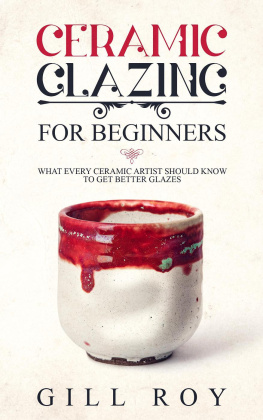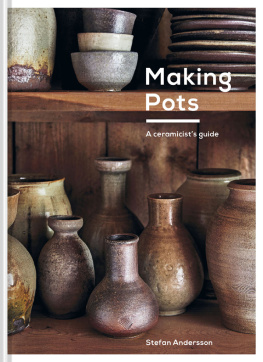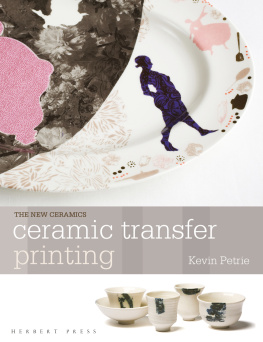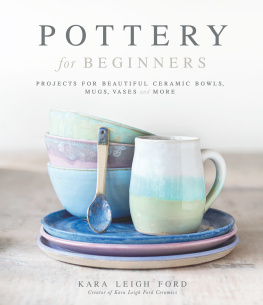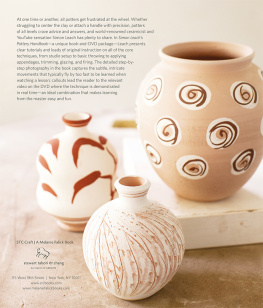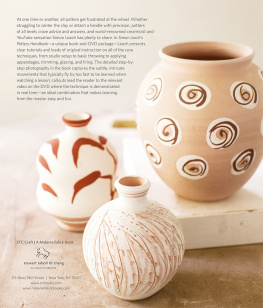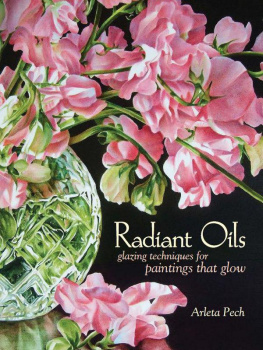Gill Roy - Ceramic Glazing for Beginners: What Every Ceramic Artist Should Know to Get Better Glazes
Here you can read online Gill Roy - Ceramic Glazing for Beginners: What Every Ceramic Artist Should Know to Get Better Glazes full text of the book (entire story) in english for free. Download pdf and epub, get meaning, cover and reviews about this ebook. year: 2019, publisher: ForgingHero Publishing, genre: Home and family. Description of the work, (preface) as well as reviews are available. Best literature library LitArk.com created for fans of good reading and offers a wide selection of genres:
Romance novel
Science fiction
Adventure
Detective
Science
History
Home and family
Prose
Art
Politics
Computer
Non-fiction
Religion
Business
Children
Humor
Choose a favorite category and find really read worthwhile books. Enjoy immersion in the world of imagination, feel the emotions of the characters or learn something new for yourself, make an fascinating discovery.
- Book:Ceramic Glazing for Beginners: What Every Ceramic Artist Should Know to Get Better Glazes
- Author:
- Publisher:ForgingHero Publishing
- Genre:
- Year:2019
- Rating:5 / 5
- Favourites:Add to favourites
- Your mark:
Ceramic Glazing for Beginners: What Every Ceramic Artist Should Know to Get Better Glazes: summary, description and annotation
We offer to read an annotation, description, summary or preface (depends on what the author of the book "Ceramic Glazing for Beginners: What Every Ceramic Artist Should Know to Get Better Glazes" wrote himself). If you haven't found the necessary information about the book — write in the comments, we will try to find it.
I always struggled with glazing, but once I learned these secrets
Are you a ceramic artist that struggles with glazing?
Do you have a love-hate relationship with glazing?
Do you get frustrated when the glaze does not come out right, and ruins your ceramic piece?
Are you tired of wasting time on bad glazes?
I, the author, will share the secret to getting the glazes you want, even if its your first time working with ceramics.
In this book you will discover:
The #1 glazing recipe you should use to make your first glaze, that is both cheap and easy to make
5 solutions to your most frustrating glazing problems
One technique that can help you save months or even years of glazing research
5 simple glazing tricks to always get the glaze you want
The secret to testing glazes safely
How to create test tiles that you can sell as miniature samples of your work
The biggest surface decoration mistake you could be making that is ruining your glazing results
I understand that this subject can be highly technical.
Therefore this book has been designed in a way that it conveys the secrets taught inside in clear and compelling language.
The concepts are explained in the simplest way possible, so that you can unravel the mystery of glaze, without confusion.
Here are the answers to some questions you might have about this book:
Q: I have never done glazing before. Will this book help me achieve a good glaze on my first try?
A: Yes. This book has been designed to be useful to even the most novice artists and enthusiasts. So even if you have never picked up a brush, this book will help you out.
Q: How much experience does the author have?
A: Im a ceramic artist that always struggled with glazing. After research, I have accumulated enough knowledge to help you get good glazes.
Q: I dont have any fancy equipment, can I still use the techniques inside this book?
A: Yes. You dont need a fancy studio to do good glazing. All you really need is access to a traditional kiln, to get started.
Note: This book does not have pictures
An artists perspective to glaze, color, and ceramic surface will transform your love-hate relationship with glazing.
So if you want to get the perfect glaze on your latest project, without having to spend hours going through the tiring cycle of glazing and reglazing your pot then
Take action and buy this book now!
Gill Roy: author's other books
Who wrote Ceramic Glazing for Beginners: What Every Ceramic Artist Should Know to Get Better Glazes? Find out the surname, the name of the author of the book and a list of all author's works by series.

